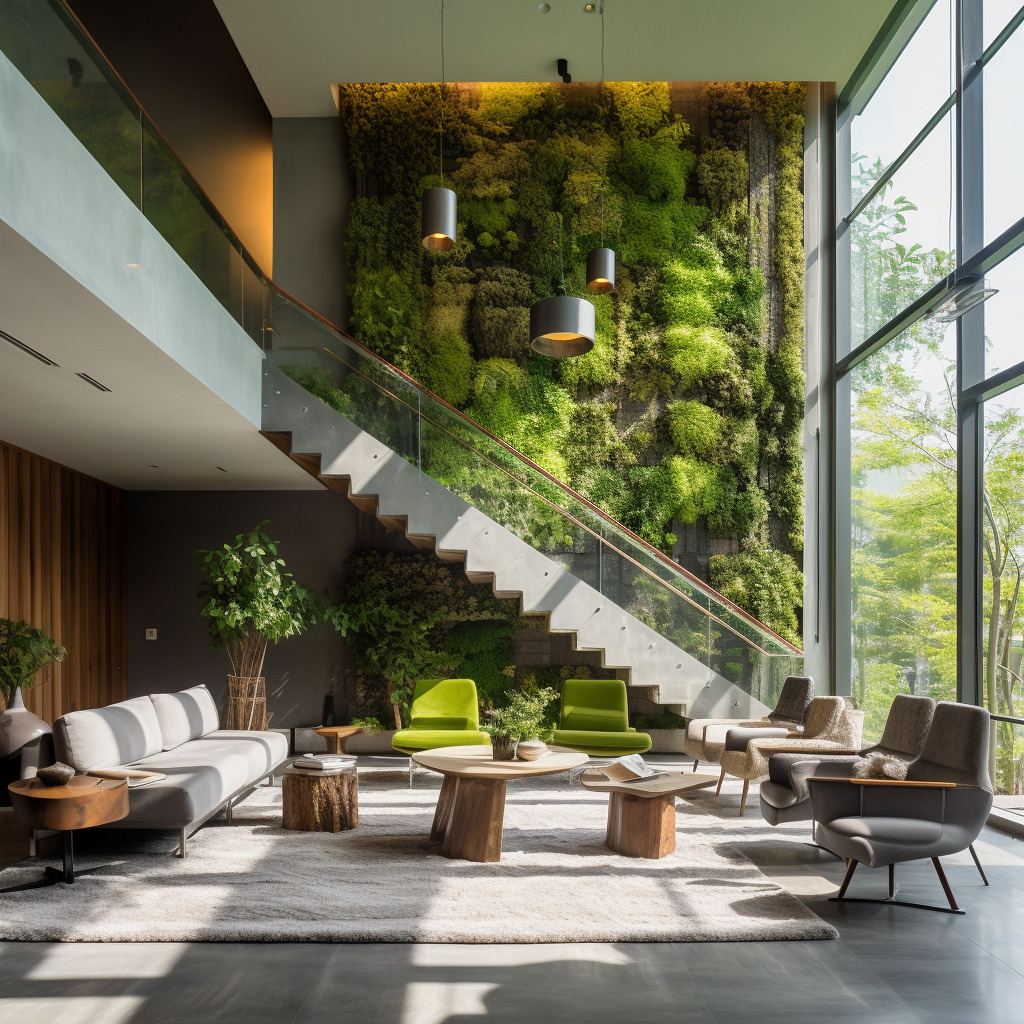The Essence of Sustainability: Embracing Green Building Materials in Interior Design
In an era where the environment clamors for attention and preservation, the concept of 'green living’ transcends beyond mere buzzwords and plants its roots deeply in the spaces we inhabit. Our homes, offices, and recreational spaces are now canvases for an ecological masterpiece, where the use of green building materials foregrounds a narrative of sustainability and responsibility. With the right design elements and materials, we can curate interiors that not only speak to our aesthetic senses but also testify to our commitment to the planet. Let’s embark on a journey to understand how to intertwine sustainability, functionality, and style within our living spaces.
Key Elements
The interior design landscape is vast and personalized, yet certain core elements remain pivotal in creating cohesive and inviting spaces. Integrating green building materials into these elements can result in a transformative design experience that resonates with eco-friendly ethos.
- Element 1: Color Palettes
The choice of colors profoundly impacts the mood and visual appeal of a room. Opting for natural, non-toxic paints and finishes can enhance air quality while adding to the visual charm. - Element 2: Furniture Arrangement
Sustainable furniture made from reclaimed or responsibly-sourced wood not only introduces an organic feel but also ingeniously reduces the environmental footprint. - Element 3: Lighting
The interplay of natural and artificial lighting can redefine a space. Incorporating LED bulbs and fixtures made from recycled materials epitomizes energy efficiency and smart design. -
Element 4: Accessories
Decorative elements can be sustainable too. Choose accessories made from recycled, upcycled, or biodegradable materials to accentuate the green narrative. -
Element 5: Flooring and Wall Treatments
Bamboo, cork, and recycled glass tile are examples of environmentally friendly materials that deliver both on quality and sustainability.
Tips for Green Building Materials
When weaving the theme of sustainability into your design plans, here are practical considerations for choosing green building materials:
- Consider the Lifecycle
- Evaluate materials for their entire lifecycle—from sourcing to disposal; opt for those with a low environmental impact.
- Focus on Indoor Air Quality
- Select materials and furniture with low volatile organic compound (VOC) emissions to ensure healthier indoor air.
- Embrace Local Materials
- Using materials that are locally available reduces transportation emissions and supports the local economy.
- Reclaim and Recycle
- Incorporate reclaimed wood or recycled metal elements for a touch of history and character in your design.
- Durability Matters
- Invest in high-quality materials that will stand the test of time, reducing the need for replacements and lowering waste.
FAQ about Green Building Materials
Question 1: What makes a building material 'green’?
– Answer: A green building material is considered 'green’ based on several factors including its production process, energy efficiency, recyclability, and the impact on human health. Typically, materials that are non-toxic, sustainably sourced, renewable, and have a low carbon footprint fall into this category.
Question 2: How do green building materials contribute to energy efficiency?
– Answer: Green building materials often have superior insulation properties, which help regulate indoor temperature, thereby reducing the need for heating and cooling. Materials such as double-glazed windows, insulated doors, and reflective roofing can significantly reduce energy consumption.
Question 3: Can green building materials improve indoor air quality?
– Answer: Absolutely. Choosing materials with low or zero VOCs, such as natural paints and sealants, can drastically improve the air quality within indoor environments, leading to better health and comfort for occupants.
Question 4: Are green building materials cost-effective?
– Answer: While the initial cost may be higher for some green building materials, their durability, energy efficiency, and low maintenance requirements often lead to cost savings over time. Additionally, some governments offer incentives for using sustainable materials.
Question 5: How can I ensure the materials I choose are truly green?
– Answer: Look for certifications such as LEED, Energy Star, or the Forest Stewardship Council (FSC) label to verify that products meet certain environmental standards. Researching the source and production methods of materials can also provide insights into their sustainability.
As interior design continues to embrace sustainability, the integration of green building materials is not just a trend but a lasting movement. Amidst this green revolution, we find an opportunity to redefine our spaces in ways that reflect our values and commitment to the planet, never compromising on elegance or comfort. Such an approach to design does not merely decorate a room but tells a story of environmental stewardship and leaves a legacy of conscious living.




